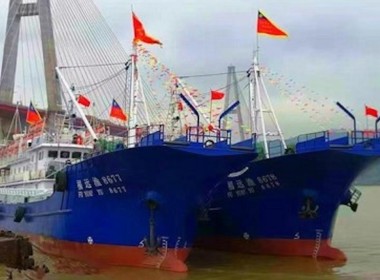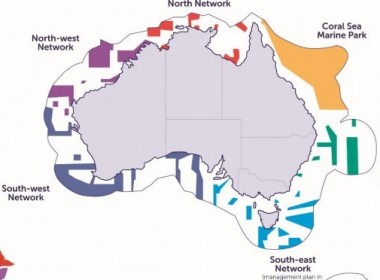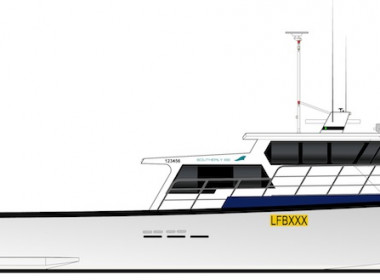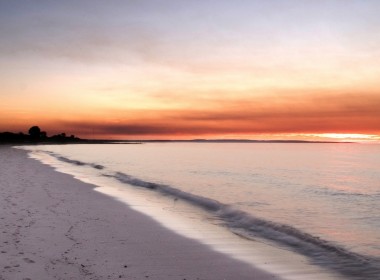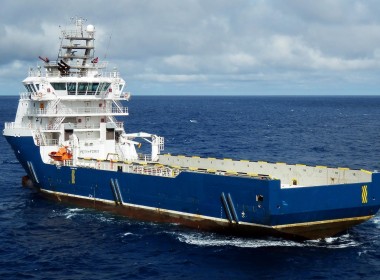REMINISCENCES | Leaving Kapingamarangi

This is the story of a great fisherman and seafarer, now a Hawaiian “kapuna” or elder, who in 1971 demonstrated remarkable seamanship and the ability to make a very difficult decision about a sick boy when leaving the Polynesian atoll of Kapingamarangi. His name is Walter Paulo, and he is blind in one eye.
In June 1971 he was captain of the United States fishery research vessel Townsend Cromwell during a three-day visit to Kapingamarangi, a beautiful atoll in the tropical western Pacific near the equator north of Papua New Guinea.
What follows took place during Townsend Cromwell’s Cruise 53, a cross-Pacific expedition from Honolulu to Guam and the Northern Mariana Islands. The ship returned to Honolulu threading its way through many of the islands of the Federated States of Micronesia, the Republic of Palau and the Republic of the Marshall Islands. It was a lengthy voyage. I estimated the Townsend Cromwell covered about 11,000 nautical miles during the 13 weeks it was away from Honolulu.
I was the chief scientist on the leg from Chuuk Island (aka Truk) to Honolulu. Besides Chuuk, we visited the islands of Nama, Piis, Nukuoro, Kapingamarangi, Pohnpei (aka Ponape), Kosrae, Namorik, Arno, and Majuro. It took us five weeks to do all this, so we did not stay too long at any one island.
We stayed in Kapingamarangi for three days in order to make a bait survey. The National Marine Fisheries Service was keen on finding out how much live tuna bait there was in Kapingamarangi and to pass on our findings to the local fishermen. I suspected they already knew more than we were able to tell them.
“A beautiful and idyllic Polynesian island”
Kapingamarangi is located at 1º04´N. and 154º45´E., 600 miles northeast of the main part of Papua New Guinea. An atoll with a lagoon 30 miles wide, it is 84 miles north of the equator and has the distinction of being the westernmost Polynesian island in the Pacific, far outside the vast triangle of Polynesian islands bounded by New Zealand, Tahiti and Hawaii.
How it came to be settled by Polynesians will probably never be known with certainty, but it is likely that some Polynesians landed on Kapingamarangi either by chance having been blown off course while sailing to another Polynesian island, or perhaps by Polynesians purposely seeking another place to live.
Colour films I had seen that were taken by Bishop Museum anthropologist Kenneth Emory in the 1960s depicted Kapingamarangi as a beautiful and idyllic Polynesian island with gracious coconut palms bending down towards the water of the lagoon, attractive, well-built native houses built of coconut tree logs, thatched roofs of coconut leaves strongly held together with sturdy cords of rope made from the bark of coconut trees, called sennit, and robust smiling and healthy natives. And that is the way it was when we arrived.
The island’s population was about 500, living primarily on two of the atoll’s islets, Touhou and Werua, which are located on the northeastern edge of the atoll. The atoll is comprised of 30 islets, most along the eastern edge of the atoll. Increases in the population over the years have been dispersed to Pohnpei Island, the capital of the Federated States of Micronesia, where a Kapingamarangi village is now located.
Natives of Kapingamarangi are renowned carvers of sharks, and makers of woven mats, fish mobiles, shell jewelry and turtle shaped ukuleles. At the village I purchased a beautiful hammerhead shark about 15 inches long and a mobile of small fish. I also purchased an exquisite coconut grater, and the village chief gave me a model of a Kapingamarangi sailing canoe that is accurate in all details.
Our crew reciprocated by providing the village chief and other craftsmen with knives, tools and other items they needed to carve. When I returned to Honolulu I purchased some other things they needed, like sharpeners for chain saw blades and screwdrivers with plastic handles that the Kapingamarangi fishermen used to fashion lures they used to catch fish while trolling. My correspondence with them went on well into 1973.
“He placed eight or ten of the tallest men on the island to stand in waist deep water on either side of the channel as human channel markers”
The Townsend Cromwell was 158 feet (48 metres) long. To some, an oceangoing vessel 158 feet long may seem small, but for many Pacific islanders a 158-foot-long ship is very large, as the entrance channels to atolls are often narrow, shallow and difficult to navigate.
This was the situation in Kapingamarangi as the channel (called the Greenwich Passage) is not straight. It requires ships to navigate a sharp bend whether they are going in or out. When we entered Kapingamarangi the tide was high and our one-eyed Hawaiian captain, Walter Paulo, was able to get in without too much trouble – but leaving the lagoon at low tide was more difficult.
The village chief on Kapingamarangi easily solved this problem. He placed eight or ten of the tallest men on the island to stand in waist deep water on either side of the channel as human channel markers, something I had never witnessed before. At other small islands where I have been aboard a fishery research vessel (e.g., Palmyra Island, south of Honolulu) the captain would sometimes put a man high on a forward mast in order to help guide the ship in by using hand signals and voice to point out the location of reefs on each side of a channel. The Townsend Cromwell did have a high forward mast, but the human channel markers made it unnecessary for the captain to position a crewmember on this mast.
“Walter – that was a great bit of ship handling!”
Unfortunately, on the way out through the Greenwich Passage, two accidents occurred. Extending down through the bottom of the Townsend Cromwell’s hull was a pitot tube about 18 inches long. This device is used to measure the speed of a ship through the water.
The draught of the Townsend Cromwell was about 12 feet aft, where the pitot tube was located, but the depth of the water in the passage was only about 13 feet giving the ship a very small clearance from the bottom. Casualty number one was the pitot tube which was wiped out. Then just before clearing the ocean side of the channel there was a small metallic “ding” sound from under the stern of the ship. We later learned the Townsend Cromwell’s starboard propeller had nicked the coral on the edge of the reef. Fortunately this nick had no effect on the ship’s progress through the channel
Another person on board the Townsend Cromwell, who strictly speaking was not a member of the scientific field party, was the Director of the Honolulu Laboratory, Dr. Frank Hester. While the presence of a laboratory director usually puts the actual chief scientist a little on edge, I found Hester’s presence did not upset the workload too much as he was a sort of a free spirit as laboratory director’s go and did not stand on ceremony and interfered very little. Hester, in fact, is the other principal in this episode – the main one being Captain Walter Paulo.
I now call the reader’s attention to the scene on the bridge when all this happened. First there is Captain Paulo with his customary white towel wrapped around his head just above his eyes – to keep sweat from getting into his eyes, and with his customary black patch over his blind left eye. Laboratory Director Hester was at one end of the bridge; I was on the other end, and there were a couple of others looking on from outside the bridge.
The situation was more than a bit tense for Captain Paulo. But as soon as the Townsend Cromwell’s stern was out into deep water, Hester disappeared without saying a word. I thought this was a bit odd, but when Hester reappeared about a minute later I realised the purpose of his disappearing act – for in his hand was a half a glass of scotch whiskey that he very formally placed in Captain Paulo’s hand, slapped him on the back and said in a loud voice “Walter – that was a great bit of ship handling!” And everybody else both inside and outside of the bridge gave the captain a big round of applause.
“Should he take the boy with a communicable disease on the Townsend Cromwell?”
The afternoon we left Kapingamarangi was very busy for Captain Paulo, for besides the ship’s business he faced a serious medical problem. The medical practitioner on the island took Captain Paulo and a few others, including me, to a thatched roof house, where a boy about 10 years of age was lying immobile on a lauhala (pandanus) mat. Five or six women were seated around the mat fanning the young boy, who was not moving and appeared to be unconscious. After a little while the village elders took Captain Paulo aside and asked him to take the boy to Pohnpei Island, the capital of the Federated States of Micronesia, 400 miles northeast of Kapingamarangi and the next stop on the cruise.
I do not know how the captain determined that the boy was probably suffering from meningitis, an inflammation of the membranes that surround and protect the brain and spinal cord, but somehow he came to that conclusion. Meningitis is usually caused by a bacterial or viral infection when an infected person coughs or sneezes; thus the disease is communicable.
Captain Paulo was then faced with a very difficult decision – should he take the boy with a communicable disease on the Townsend Cromwell, or should he leave the boy on Kapingamarangi and seek medical attention for the boy when the ship arrived in Pohnpei? This would be a 1.5-day trip by the ship.
Faced with this extremely difficult decision, Captain Paulo decided not to take the boy on the Townsend Cromwell to Pohnpei. It turned out to be the right decision as we later learned the boy died the night the ship left Kapingamarangi. I spoke by telephone with Captain Paulo, now 84 years of age, in early February 2008 and asked him how he was able to reach the decision that he made. His health at that time was not very good and he told me he could not remember how he made this difficult decision, putting his lack of remembrance to the passage of 37 years since the Townsend Cromwell visited Kapingamarangi in 1971.
So the Townsend Cromwell made a safe passage through the Greenwich Passage on leaving Kapingamarangi but on a voyage with a bittersweet ending.
This is an excerpt from Bob Iversen’s new book Swimming with Fishes, reviewed here.
More news, opinion and vessel reviews in this month’s Fishing and Aquaculture Week.
Submissions wanted! Do you have an exciting, amusing or downright dangerous anecdote from your time in the maritime world? Each week, we will feature new personal experiences from across the globe. Submissions to: [email protected].



